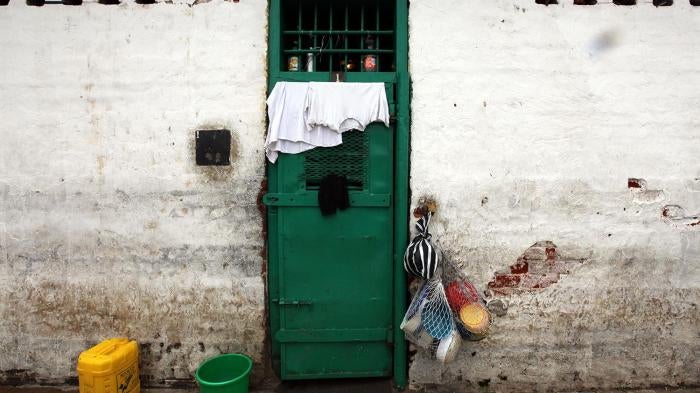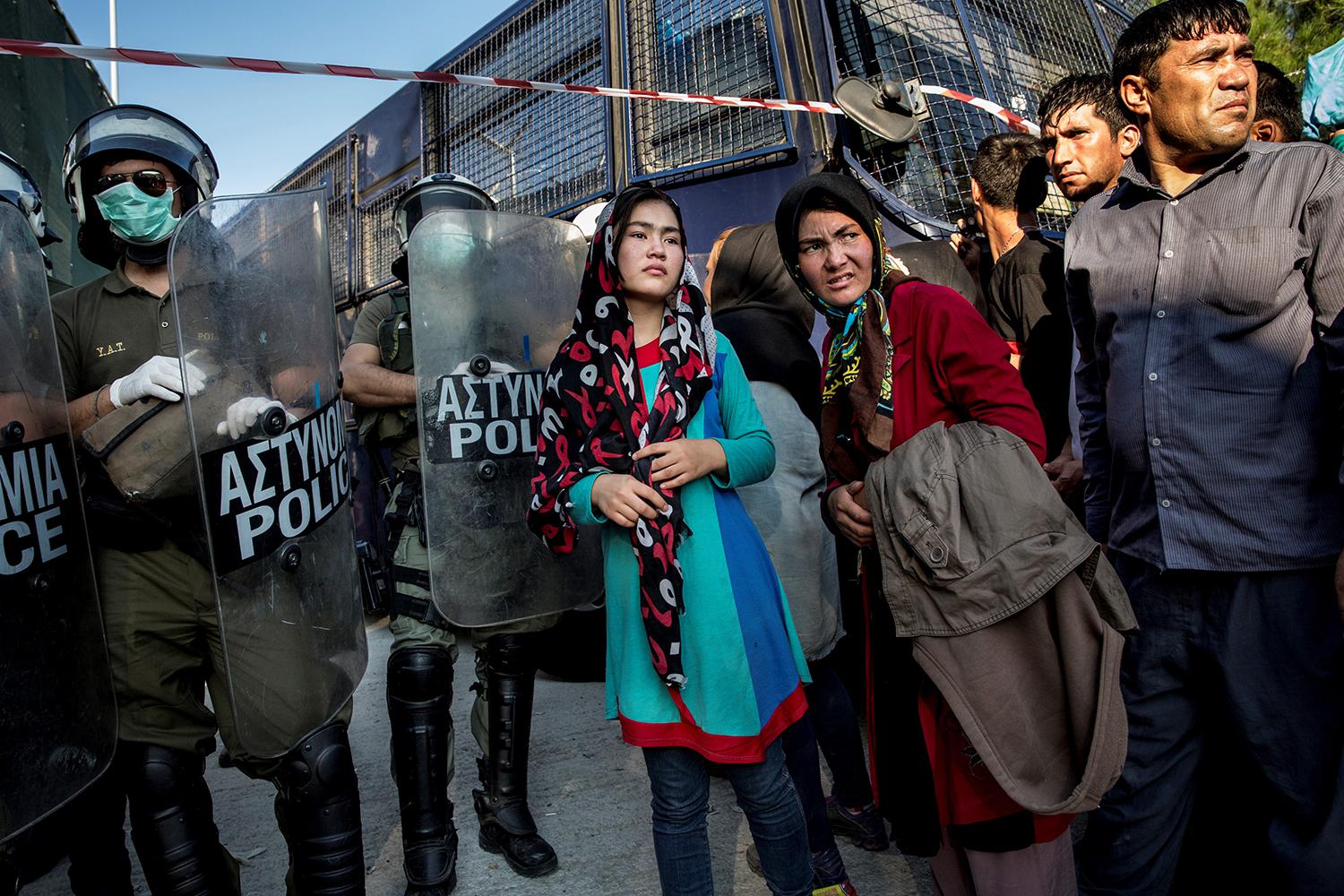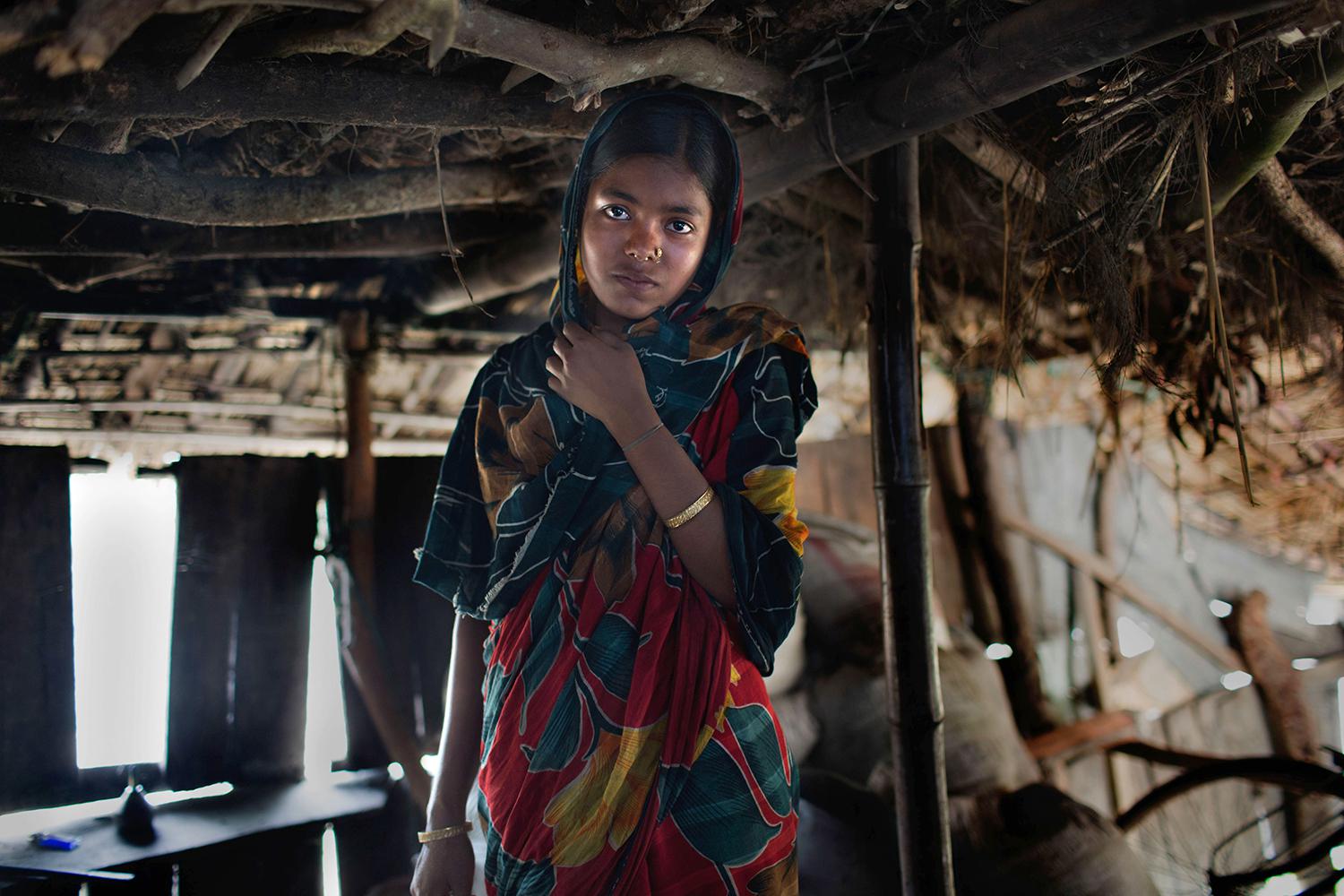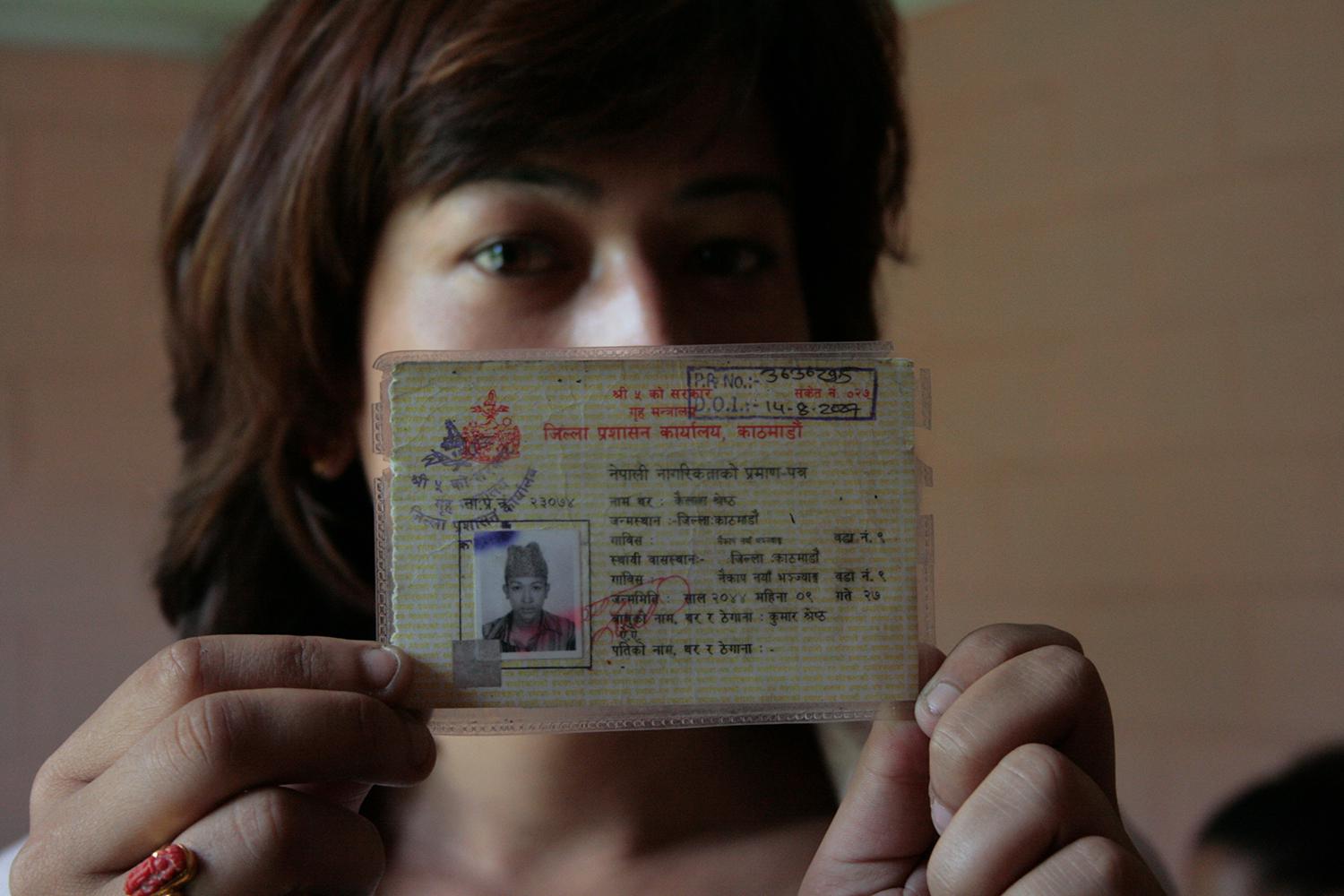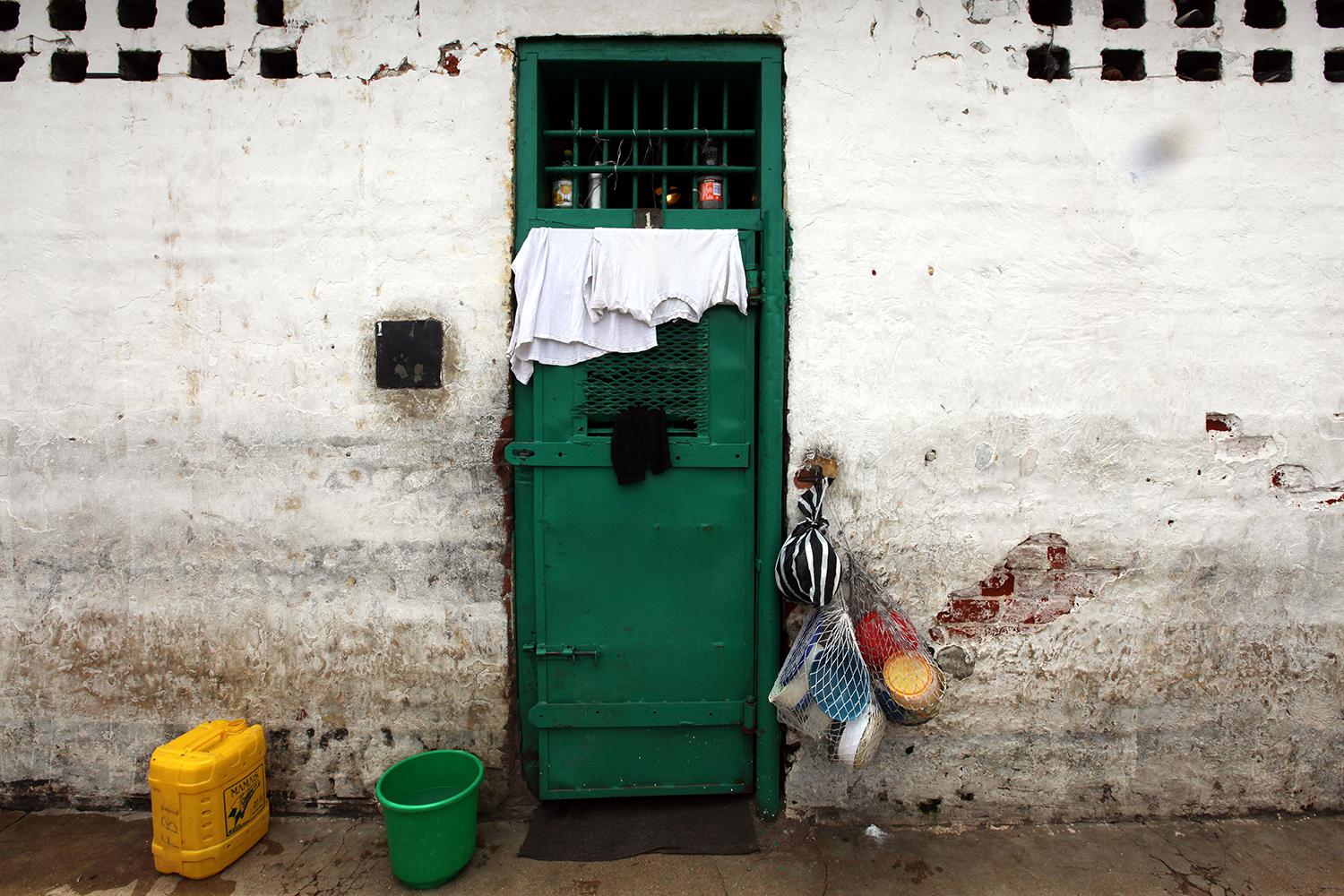Shortly after 16-year-old T.W. was booked into Florida’s Polk County Jail in February 2012, his three cellmates punched him, whipped him with wet towels, and nearly strangled him with a pillowcase. They then urinated on him, sprayed his face with cleaning fluid, and stripped him naked before wrapping a sheet around his neck, tying the other end around the window bar, and pulling so tight he lost consciousness. They repeated this attack three times over the course of several hours without jail guards on regular rounds even noticing, a federal magistrate judge found.
Around the world, children languish behind bars, sometimes for protracted periods. In many cases, as with T.W., they face brutal and inhumane conditions.
The lack of record-keeping and a wide array of institutions means that the number of children held worldwide in such environments is not known. The United Nations Children’s Fund, UNICEF, has estimated that more than 1 million children are behind bars around the world. Many are held in decrepit, abusive, and demeaning conditions, deprived of education, access to meaningful activities, and regular contact with the outside world.
Many of these children—and adults who were convicted of crimes committed when they were children—have received excessive or disproportionate sentences that violate international law, which requires that imprisonment of children be in “conformity with the law and shall be used only as a measure of last resort and for the shortest appropriate period of time.”
Others are held for acts that should not be crimes at all, such as skipping school, running away from home, having consensual sex, and seeking or having an abortion. Some have never been tried for their alleged crimes; others are tried as if they were adults and, when convicted, sent to serve time in adult prisons.
Migrant children are also routinely held in immigration detention, contrary to international standards. Children with disabilities and others may be institutionalized in the guise of protection.
A UN study expected to be finalized in 2017 promises to put international focus on the detention of children and hopefully result in more systematic monitoring of abusive practices, increased compliance with international standards, and a dramatic reduction in the number of children deprived of their liberty.
But governments need not wait for this report; they can and should act now to establish genuine alternatives to detention and ensure that those children who must be detained are held in humane conditions and benefit from schooling, health services, recreational opportunities, and contact with the outside world.
Detention and Incarceration in Response to Crime
Most countries keep no accurate records of the numbers of children who are locked up for breaking the law. Furthermore, getting a sense of the numbers of children behind bars is complicated by the fact that some governments hold children in several kinds of facilities, including adult jails and prisons as well as juvenile detention centers.
We know that the United States leads the industrialized world in the number and percentage of children it locks up in juvenile detention facilities, with over 60,000 children in such facilities in 2011, according to data compiled by the Annie E. Casey Foundation, which works on juvenile justice and other children’s rights issues. The US also sends an extraordinary number of children to adult jails and prisons—more than 95,000 in 2011, Human Rights Watch and the American Civil Liberties Union estimated—with few opportunities for meaningful education or rehabilitation.
Whatever the numbers, there are several reasons why many children around the world should not be locked up.
First, the Convention on the Rights of the Child requires that locking up children on juvenile or criminal charges be a matter of last resort. Too often it’s the first, or even only, resort; there simply may be no alternatives in law or practice.
Second, children are too often charged and held for acts that shouldn’t be criminal. For instance, street children are frequently presumed to be guilty of wrongdoing and arrested on vague charges—if they are charged at all, as Human Rights Watch has found in Cambodia and Uganda, among other countries.
Many countries place children in detention for disobeying their parents or for other “status offenses,” acts that would not be crimes if committed by an adult. A Texas Public Policy Foundation study found that in the US in 2010, over 6,000 children were detained for acts such as truancy, running away from home, “incorrigibility,” underage drinking, and curfew violations.
Girls may face specific restrictions on their freedom of movement, enforced by criminal law. In Saudi Arabia, for example, girls as well as adult women may be jailed, imprisoned, and flogged for the ill-defined offenses of “seclusion” and “mingling,” which one official described to Human Rights Watch as a girl or woman “being in an apartment by herself, or with a group of others, or sitting in a place where it is not natural for her to be.”
Children in some countries, including Peru and some Mexican and US states, may face criminal charges for consensual sexual conduct—in the case of the US, particularly if the partner is of the same sex. Anti-prostitution laws in many countries mean that children may also be arrested, imprisoned, and detained when they engage in survival sex (the exchange of sex for food, shelter, or money in order to meet basic needs). Girls who seek or procure an abortion may face criminal charges—even in cases where the pregnancy was the result of rape—in Chile, El Salvador, Ecuador, Peru, and the Philippines, among other countries.
Third, children may be imprisoned under sentences that are impermissible under international law. International law flatly prohibits sentences of death (as well as life sentences that do not allow for the possibility of release) for crimes committed under the age of 18.
Nevertheless, at least 160 individuals were on death row in Iran for crimes they were found to have committed when they were younger than 18, the UN secretary-general reported in February 2015. Since 2010, juvenile offenders have been sentenced to death in Egypt, Iran, Maldives, Pakistan, Saudi Arabia, Sri Lanka, Sudan, and Yemen. In Nigeria, some convicted before 2010 continue to be held under sentence of death.
International law also requires that children be detained or incarcerated for the shortest appropriate period of time, and they must receive sentences proportionate to the circumstances and gravity of their offenses, as well as their own individual circumstances and needs. Their sentences must be subject to early, regular, and meaningful review for the purpose of conditional release or parole. Nevertheless, children may receive life sentences in 73 countries, including the US and 49 of the 53 states in the Commonwealth of Nations, a 2015 study by the Child Rights International Network (CRIN) found.
Fourth, children from minority groups are frequently disproportionately subject to arrest and detention. In fact, the disparities between their treatment and that of children from groups that represent the majority may increase at every stage of the process, from arrest to bail determinations to sentencing to parole decisions, as studies of Aboriginal children in Australia’s juvenile justice system and of minority children in the United States have found.
Fifth, prosecuting children as adults poses additional problems. Not every country has established a juvenile justice system, despite the requirement in international law to do so. As Human Rights Watch found in Zambia, for example, the absence of a dedicated juvenile justice system can mean that children may wait for months or even years for their cases to be concluded.
Of those states that do have a juvenile justice system, some nevertheless treat older children as if they were adults. This may be done systematically, by setting an age lower than 18 for the jurisdiction of the ordinary criminal courts, as is the case in Cuba, Ethiopia, Jamaica, Hong Kong, the Philippines, Ukraine, the Australian state of Queensland, and New York State, among other jurisdictions.
It may also be done arbitrarily, such as when judges decide to treat children as adults if they show signs of puberty, as is done in Saudi Arabia and other countries in the Middle East. In addition, in the US, every state and the federal criminal justice system allow some children to be prosecuted in the ordinary criminal courts, depending on their age and the seriousness of the offense with which they are charged.
Brazil and India were at time of writing each considering lowering the age of criminal majority, the minimum age for trial in the ordinary criminal courts, for some crimes. If these proposals are enacted in their current form, children ages 16 and over who are accused of serious crimes will be prosecuted in adult courts.
Detention as a Means of Immigration Control
When Beatriz L. fled to the US from Honduras with her 11-year-old son after gangs threatened to forcibly recruit him, they were locked up together in a US detention center for migrant families for over 10 months. Beatriz told Human Rights Watch that her son began to spend all day sleeping. He said, “Mom, I just want to sleep so that when I wake up we’ll be free.”
International standards provide that the detention of any asylum seeker, whether a child or an adult, should normally be avoided. Mandatory or indefinite detention of children violates the Convention on the Rights of the Child, which states that the detention of children should be used only as a matter of last resort and for the shortest appropriate period of time. The Committee on the Rights of the Child has urged governments to “expeditiously and completely cease the detention of children on the basis of their immigration status.” Moreover, the detention of children solely because of their parents’ immigration status violates the prohibition on arbitrary detention.
Nevertheless, many countries continue to detain children as a means of enforcing their migration laws.
Australia has operated a mandatory detention framework for all asylum seekers since 1992. Australia held 112 children in immigration detention in mainland detention centers as of October 31, 2015. A further 95 children were held in Australia’s regional processing center in Nauru. Reviews by the UN refugee agency (UNHCR), the Australian Human Rights Commission, and other authorities have found serious shortcomings in the Nauru detention center, including severe shortages of water, footwear, and clothing, and unhygienic and crowded conditions that have resulted in outbreaks of lice, gastroenteritis, and bacterial skin infections. In 2015, disturbing reports emerged that children and adults had been sexually assaulted at the hands of staff and other detainees during the previous two years.
In the US in mid-2014, the Obama administration dramatically expanded family immigration detention capacity, from fewer than 100 beds to more than 3,000, for the stated purpose of deterring Central American migrants from crossing into the US from Mexico. The Obama administration has since backed away from that rationale of deterrence in custody determinations for individual cases. Nevertheless, it continues to argue in federal court that it requires the family detention system to deter further mass migration.
Thailand’s immigration laws permit the indefinite detention of all refugees, including Rohingya and members of other ethnic groups from Burma, ethnic Uighurs from China, Pakistanis, and Somalis. Migrant children are held in squalid cells without adequate food or opportunity to exercise or receive an education. Children have told Human Rights Watch that immigration detention centers can be so crowded they must sleep upright. One mother said there were three toilets for 100 detained migrants, which her teenage daughter would avoid using because they had no doors.
Elsewhere in the world, Human Rights Watch and other groups have documented large-scale detention of migrant children in Indonesia, Malaysia, and Mexico.
Detention in the Name of National Security
Children deemed to be a security threat may be held under administrative or military detention, which have fewer checks than criminal and juvenile justice systems.
Such children include captured, surrendered, or demobilized child soldiers, even though international standards call for states to treat them primarily as victims and offer them rehabilitation. Children have been held in large numbers in Afghanistan, Democratic Republic of Congo, Iraq, Somalia, and Syria for alleged association with armed or extremist groups. The special representative of the UN secretary-general for children and armed conflict, Leila Zerrougui, expressed concern that children were detained for alleged involvement with armed groups in 17 of the 23 situations covered in her 2014 report.
Each year, Israel arrests, detains, and prosecutes in the military court system some 500 to 700 Palestinian children suspected of criminal offenses in the occupied West Bank, according to Defence for Children International/Palestine Section. Israel is the only country that automatically prosecutes children in military courts. In 2015, Human Rights Watch found that Israeli security forces used unnecessary force to arrest or detain Palestinian children as young as 11 in East Jerusalem and the West Bank, and have choked, beaten, threatened, and interrogated children in custody without parents or lawyers present.
Other countries also prosecute some children in military courts. In Egypt, for example, some of the dozens of children arrested in the last two years for political offenses have been tried in military courts.
Detention in the Name of Treatment or Care
Children are also detained in the name of “treatment” or “rehabilitation” from drug dependence or as a misguided means of managing disabilities.
In Cambodia, eight drug detention centers hold about 1,000 people at any one time. According to the last government figures made public, at least one in 10 is a child under the age of 18. Children face the same abuses as adults while confined, including cruel, inhuman and degrading treatment and even torture.
Romchoang was under age 18, for example, when he was held in a military-run drug detention center in Koh Kong province for 18 months. He was locked in a room, chained to a bed for the first week, and later made to perform physical exercises each morning. Soldiers, who beat him if he fell asleep, told him sweating would help him recover from drugs.
Laos and Vietnam also operate drug detention centers that hold large numbers of children; in Vietnam, detained children and adults are subjected to forced labor, beatings, and torture. In fact, the rationale for such drug detention centres is to lock up and punish the poor and marginalized. In Cambodia, these centers hold “street children” who do not use drugs but who are picked up and detained in operations to “clean the streets.” Similarly, Lao authorities use the Somsanga detention center, which has received direct support from the US embassy in Vientiane in recent years, as a dumping ground for street children and others considered socially undesirable.
Elsewhere in the world, street children are frequently rounded up and detained arbitrarily, sometimes under vaguely worded criminal laws.
Many countries lock up children with disabilities, ostensibly for their care, but in reality due to a lack of community services and support for families. In Russia, for example, too often children with disabilities are whisked to institutions shortly after birth, where they may be tied to beds, receive little or no attention or education, and be denied health care and adequate nutrition. Human Rights Watch has found similar abusive practices in Croatia, Greece, and India, to name just a few recent examples.
Some children may also be locked up for perceived or actual psychosocial disabilities. Human Rights Watch documented the practice of shackling children as young as five years old—together with adults—in so-called prayer camps (or spiritual healing centers) in Ghana, where they were tied to a tree or wooden post with a heavy metal chain, denied food, water, and shelter, and separated from their families.
Impact of Detention and Imprisonment
Detention takes an enormous toll on children, particularly on their physical and mental health. Torture and other ill-treatment at the hands of guards is a risk for every form of detention, especially for children held on national security grounds.
Children may also face violence and other abuses from fellow detainees, sometimes instigated or condoned by staff. In Australia, for example, a damning report from the Northern Territory’s Children’s Commissioner that was made public in September 2015 revealed that children in detention were subjected to isolation in cramped quarters, sometimes for nearly three weeks, and to excessive force. In Florida, two children died in February and September 2015 after other juvenile detainees beat them, possibly in exchange for contraband food from guards.
Sexual assault is a specific risk for boys as well as girls, particularly when children are held with adults.
There are generally fewer detention facilities for girls, who are usually detained less often than boys. Many are held far from their families and communities, or shunted off to the adult system. Some detention centers lack adequate sanitation, and girls may lack the materials and privacy needed to manage their menstruation. The lack of privacy in areas for bathing or going to the bathroom exacerbates the risk of sexual harassment or assault.
Facilities where children are held are often little more than warehouses. Educational services are often not available to children who are held for acts of delinquency, on national security grounds, or for immigration control. Children who are deprived of their liberty in the name of protection or care, including children with disabilities, frequently do not receive the education and other services they need. Children held for acts of delinquency are too often placed in facilities that lack the staff and infrastructure necessary to provide anger management classes, life skills training, counselling, and other rehabilitative support.
Detained child asylum seekers in particular experience extremely high rates of anxiety, depression, and symptoms of post-traumatic stress disorder, as research in Australia, Britain, and the US has found. Immigration detention may also lead children to abandon asylum claims even though they need international protection.
Alternatives to Detention
To ensure that deprivation of liberty is really used as a last resort, governments should establish and employ true alternatives to detention.
In the justice system, these include diversion of children from the formal justice system through alternative procedures and programs, probation, mediation, counselling, community service, and, where appropriate, “semi-open” facilities that give children supervision and structure but allow them to attend schools in the community and return home for overnight visits.
For migrant children and families, community-based alternatives—housing in settings that allow asylum seekers, refugees, and other migrants to attend regular schools, work in the community, and otherwise interact regularly with others—are preferable in virtually every respect to immigration detention, as the experience of supervision and case-management programs in Australia, Canada, Indonesia, Thailand, the United Kingdom, and the US have shown.
They may be healthier, more cost-effective, and result in comparable rates of appearance at asylum or immigration hearings, research has found. States should also do more to facilitate placing unaccompanied and separated children with relatives in the destination country or in third countries.
Children who use drugs should receive appropriate treatment and care. Compulsory drug detention centers cannot be considered a form of “treatment” or an “alternative to imprisonment.” In line with the calls of the UN special rapporteur on torture and 12 UN agencies, states should immediately close all drug detention centers.
Children with disabilities should enjoy their right to live in the community, with appropriate support for themselves and their families. When institutional treatment is necessary, it should follow strict therapeutic protocols, including strict safeguards on involuntary treatment. Children with disabilities should receive appropriate legal and other support to enable them to make important life decisions, including related to medical treatment, and should have meaningful opportunities to challenge institutionalization.
***
Recent years have seen some positive developments in the treatment of children who otherwise would have been detained. The number of children in juvenile detention centers in the US fell consistently and dramatically from 1996 to 2011, the last year for which complete data are available. In California, legislation enacted in 2014 offered the possibility of earlier parole for several thousand offenders who were under 18 at the time of a crime but who were tried as an adult and sentenced to an adult prison term, and a 2015 law extended eligibility for parole to those who were 22 or under at the time of the crime.
Several countries have agreed in recent years to end or sharply reduce detention of migrant children. Finland, Malta, and the UK have publicly committed to ending the practice, while policies in France and Israel limit the detention of migrant children to “exceptional circumstances.” Panama, Japan, Turkey, and Taiwan have enacted legislation prohibiting detention of migrant children, and South Africa’s High Court ruled in a series of decisions beginning in 2004 that migrant children may only be detained as a last resort.
In February 2015, a federal court required that US immigration officials begin individually evaluating asylum-seeking families for release. In June 2015, after sustained advocacy from Human Rights Watch and other organizations, US government officials committed to releasing a majority of detained families within weeks if they could make a facially legitimate asylum claim. Later in the year, another federal court found that children could not be housed for long periods of time in jail-like facilities that have no license to care for children.
In 2010, in response to information provided by Human Rights Watch, UNICEF investigated Cambodia’s Choam Chao detention center, which it had funded since 2006. After finding abuses in the center, UNICEF called for the immediate release of all children from drug detention centers in Cambodia. In response, the government stopped admitting children to the center and closed it shortly thereafter.
Such steps show that governments can do more to reduce their reliance on detention and incarceration. Locking children up is frequently unnecessary, abusive, and counterproductive. It’s time for states to recognize these facts and end these unlawful practices.
